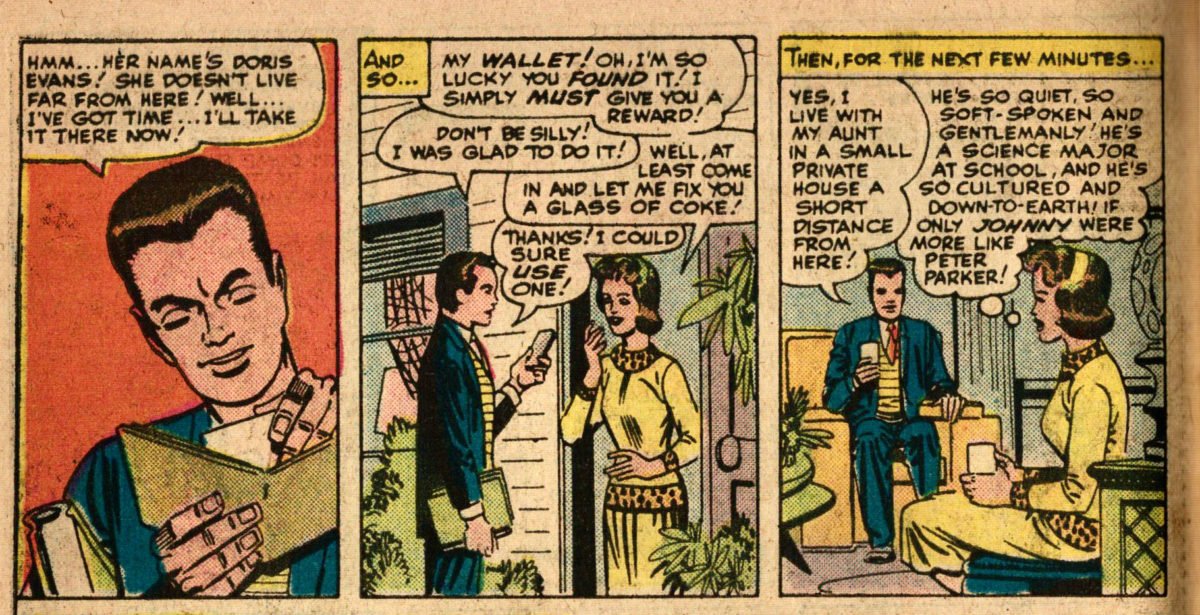Featuring: Human Torch and Thing
Release: August 11, 1964
Cover: November 1964
12 cents
Stan Lee is our inspired writer
Dick Ayers is our admired penciller
Paul Reinman is our desired inker
S. Rosen is our tired letterer
13 pages
| Previous | #260 | Next |
|---|---|---|
| Amazing Spider-Man #18 | Reading order | Strange Tales #126, Story B |
| Strange Tales #125, Story B | Strange Tales | Strange Tales #126, Story B |
Mad Thinker and Puppet Master team up to destroy the Fantastic Four; the plan is to use puppets to manipulate Thing and Human Torch into fighting.
I swear we’ve already read this story. Maybe I’m thinking of Strange Tales #116 where Puppet Master used puppets to manipulate Thing and Human Torch into fighting. Or Fantastic Four #28 where the Mad Thinker and Puppet Master teamed up to destroy the Fantastic Four.

Stan refers to the alliance of the Puppet Master and Mad Thinker as the “Deadly Duo”. That’s what Stan called the alliance of Dr. Doom and Namor in Fantastic Four #6. I guess there are so many alliterative appellations for abhorrent alliances.


































